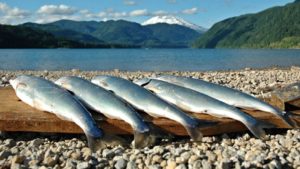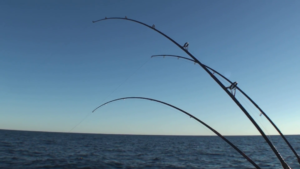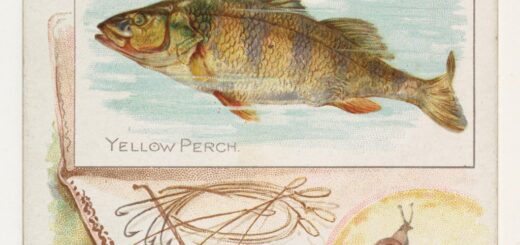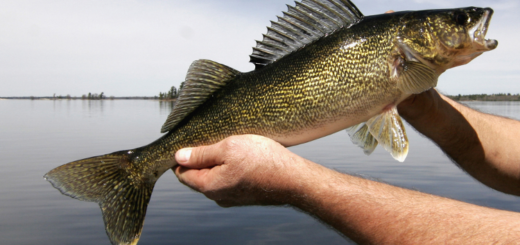How to catch the amazing Kokanee fish
Before we get into exactly how to catch the amazing Kokanee fish, lets get to know them a little better. Kokanee are the non-migrating form of sockeye salmon and like all salmon, they die at after their first spawning. However, unlike other salmon Kokanee have blue backs, silver sides, and lack distinct dark spots on their backs and tail fins. In addition, when compared to other trout, they have finer scales, larger eyes, and deeply forked tail.
Kokanee Biology
You will find Kokanee in Alaska, Washington, Idaho, and Oregon. It can also be found up through British Columbia and the Yukon in Canada. Subdivisions of the kokanee are found in Japan and Russia. The kokanee fish was introduced to the the Northeastern United States and some southerns states, including New England, New York, Montana, North Dakota, California, Wyoming, Utah, and Nevada.
Subdivisions of the kokanee are found in Japan and Russia. The kokanee fish was introduced to the the Northeastern United States and some southerns states, including New England, New York, Montana, North Dakota, California, Wyoming, Utah, and Nevada.
They are open water feeders that target plankton and prefer depths where the water temperature is near 50 degrees Fahrenheit . They will also eat tiny plants, insects, and freshwater shrimp when available. It is important to note that plankton are light sensitive, which means on brighter days the plankton will descend in the water column and the Kokanee will follow. If this is in a lake that stratifies, they will be occupying a very narrow depth band. However, at different times of the year, they are found in deep water or close to the surface, depending on conditions.
Locating the Kakanee Fish
Ok, now lets get into how you are going to catch one of these amazing fish. All you need are some basic fundamental techniques and the awareness of their biology that we covered above. Many anglers try to use methods similar to fishing for Rainbow Trout. This can work, but hopefully the information below will up your game a little more and get this amazing fish on your lure more often.
Kokanee can be caught from spring through fall. The best kokanee fishing occurs during late spring when plankton blooms become more common. The Kokanee fish can be found throughout the lake and will move from day to day. So, finding a good spot one day does not ensure they will be there the next day. Kokanee are a schooling fish which will allow you to use your trusty sonar to easily locate them. Check out our post on The best fishing sonar units in the market today, to figure out which one will meet your needs. To start, you will want to check out areas where the water moves. Currents, wind blown points, narrow contours, and masses that stretch out into the lake are all great areas to inspect primarily because these are areas that their food source will get funneled into.
Kokanee Fishing Tactics
 Trolling, still fishing, and jigging are all effective ways to fish for kokanee. Using downriggers or weights will assist greatly in getting your lure to the desired depth where the Kokanee fish can be found. Kokanee trolling (Kokalling) should be done at slower speeds (.7 to 2mph) than you would for trout. Kokanee have a tendency to tend to follow you forever without striking. Then you stop or turn and BAM they hit it. They seem to like some type of change or action to your presentation. Trolling tactics such as “S” Turns, stop and go, speed up then down, or even bringing your downrigger up one turn and then back down will all help encourage a Kokanee to strike your lure. Finally, if you are trolling, make sure you find a way to know how much line is out and what speed you are going. This will allow you to recreate your results if they are positive.
Trolling, still fishing, and jigging are all effective ways to fish for kokanee. Using downriggers or weights will assist greatly in getting your lure to the desired depth where the Kokanee fish can be found. Kokanee trolling (Kokalling) should be done at slower speeds (.7 to 2mph) than you would for trout. Kokanee have a tendency to tend to follow you forever without striking. Then you stop or turn and BAM they hit it. They seem to like some type of change or action to your presentation. Trolling tactics such as “S” Turns, stop and go, speed up then down, or even bringing your downrigger up one turn and then back down will all help encourage a Kokanee to strike your lure. Finally, if you are trolling, make sure you find a way to know how much line is out and what speed you are going. This will allow you to recreate your results if they are positive.
Kokanee Fishing Gear
There many options when it comes to Kokanee lures. As we learned earlier, their primary food source is plankton. This means that we are not trying to imitate their natural food. But, instead, most Kokanee lures made to piss them off for being in their space. The Kokanee fish will attack almost anything as long as they are not threatened by it.
Some popular lure types for the kokanee fish are spoons, spinners, wedding ring spinners, crankbaits, and trolling flies. Kokanee have very soft mouth so it is a good idea to use snubber or very soft rods. These lures will either have a side-to-side action or it will move straight. When trolling, a lure with it’s own action, you’ll want to run 3 to 4 times the length of the dodger so the lure’s action isn’t interrupted by the action of the dodger. A lure with no side-to-side action you’ll want to run it 2 to 2 ½ times the length of the dodger to transfer action from the dodger to the lure.
Using larger dodgers in lakes with high predation can repel Kokanee. Larger dodgers can mimic a predator fish and may threaten the Kokanee. It’s a good idea to have a selection of 4 to 6 inch dodgers within your arsenal. This provides you with multiple options to adjust your approach. Using larger dodgers in cloudy water will help the fish find your gear. While in clear water conditions selecting a small 4-inch dodger can produce better results.
You will want to try to use a brightly colored lures that have lots of silver, red, or orange in their finish. Using UV and Glow colors are excellent during low light conditions and when fishing deeper water.
Still fishers often use size 8 to 12 hooks tipped with maggots, shoe-peg corn, or small pieces of worm. Jigging can be an effective method when a large school is located, and depending on how deep the fish are, a ¼ oz. to 1 oz. jig should get the job done.




Recent Comments